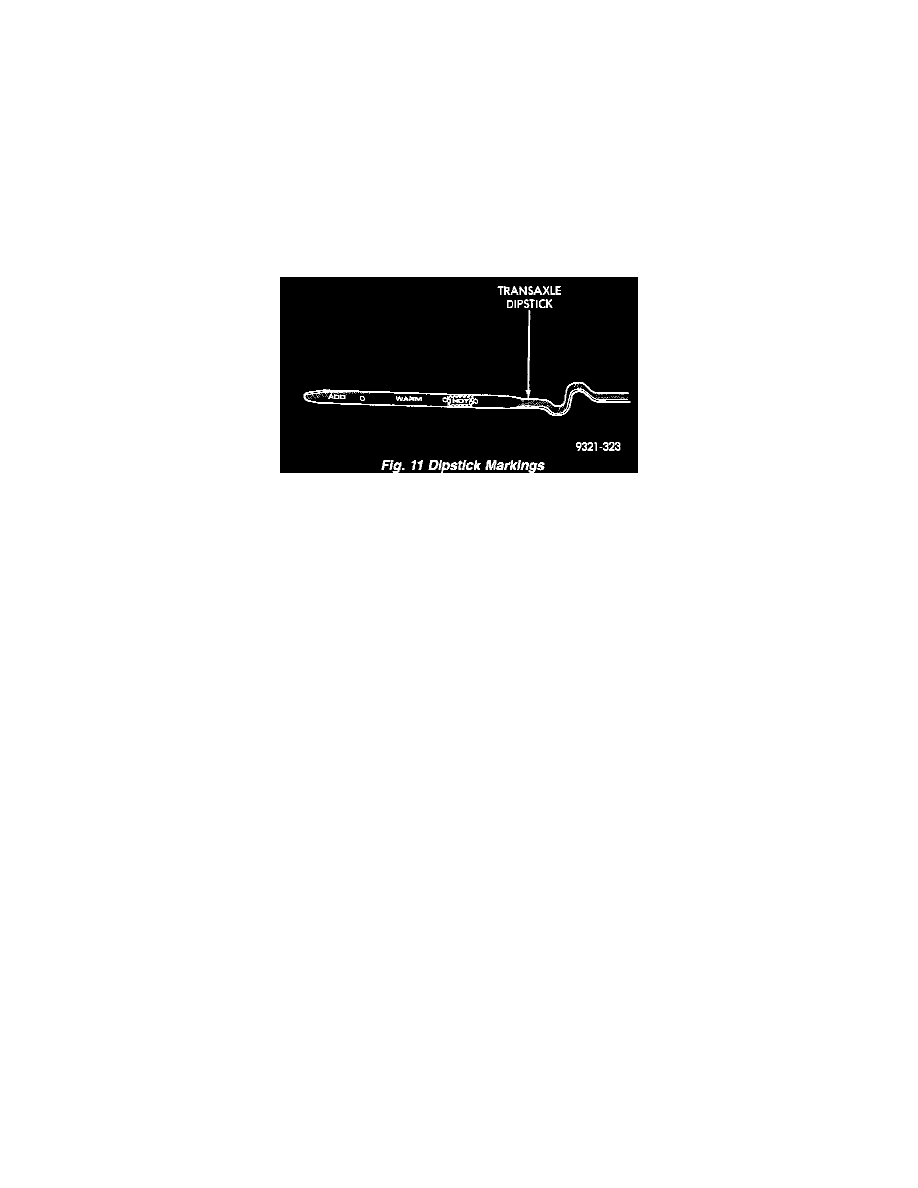Prowler V6-3.5L VIN G (1999)

Fluid - A/T: Service and Repair
NOTE: Only fluids of the type labeled MOPAR ATF+4 (Automatic Transmission fluid) Type 9602 should be used. A filter change should be made
at the time of the oil change. The magnet (on the inside of the oil pan) should also be cleaned with a clean, dry cloth.
NOTE: If the transaxle is disassembled for any reason, the fluid and filter should be changed.
1. Raise vehicle on a hoist. Place a drain container with a large opening, under transaxle oil pan.
2. Loosen pan bolts and tap the pan at one corner to break it loose allowing fluid to drain, then remove the oil pan.
3. Install a new filter and O-ring on bottom of the valve body and tighten retaining screws to 5 Nm (40 inch lbs.).
4. Clean the oil pan and magnet. Reinstall pan using new MOPAR Silicone Adhesive sealant. Tighten oil pan bolts to 19 Nm (165 inch lbs.).
5. Pour four quarts of MOPAR ATF+4 (Automatic Transmission Fluid) Type 9602 through the dipstick opening.
6. Start engine and allow to idle for at least one minute. Then, with parking and service brakes applied, move selector lever momentarily to each
position, ending in the park or neutral position.
Fig. 11
7. Add sufficient fluid to bring the level 1/4 inch above the bottom hole of the dipstick. Room temperature oil (70°F.) set at this level will expand
(when heated to 180°F.) to a level within the hot range (Fig. 11).
8. Recheck the fluid level after the transaxle has reached normal operating temperature (180°F.).
9. To prevent dirt from entering transaxle, make certain that dipstick is full seated into the dipstick opening.
Fluid Level Check Using DRB
NOTE: Engine and Transaxle should be at normal operating temperature before performing this procedure.
1. Start engine and apply parking brake.
2. Hook up DRBIII scan tool and select transmission.
3. Select sensors.
4. Read the transmission temperature value.
5. Compare the fluid temperature value with the chart.
6. Adjust transmission fluid level shown on the dipstick according to the chart.
7. Check transmission for leaks.
30,000 Mile Transaxle Oil Change
When a vehicle attains 30,000 miles on its odometer it is recommended that the transaxle oil be changed. To change the oil, use the procedure that
follows:
It is recommended that a transaxle fluid exchanger (ATF 2000+ or equivalent) be used to replace the used fluid in the transaxle. If a fluid exchanger is
not available use a fluid suction pump (Vacula or equivalent) to draw the fluid out of the dipstick tube. If a fluid suction pump is not available remove
the oil pan and drain the fluid.
CAUTION: Chrysler Corporation does not recommend using any fluid exchanger that introduces additives into the transaxle.
Transaxle Fluid Exchanger Method
1. To perform the transaxle fluid exchange, the transaxle must be at operating temperature. Drive the vehicle till it reaches full operating temperature.
2. Verify that the fill tank on the transaxle fluid exchanger (ATF 2000+ or equivalent) is clean and dry.
3. Fill the tank to the recommended fill capacity with MOPAR ATF+4 Type 9602.
4. Hookup the vehicle to the machine following the manufacturers instructions. Perform the exchange procedure following the instructions provided
with the machine.
5. Once machine has completed the fluid exchange. Check the fluid level and condition and fill to proper level with MOPAR ATF+4 Type 9602.
NOTE: Verify that the transaxle cooler lines are tightened to proper specifications. Cooler line torque specification is 2 Nm (18 inch lbs.).
